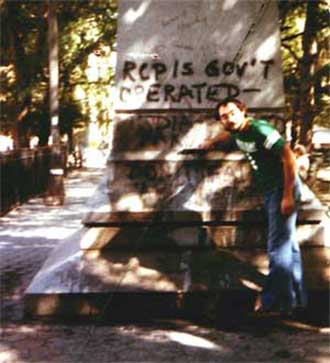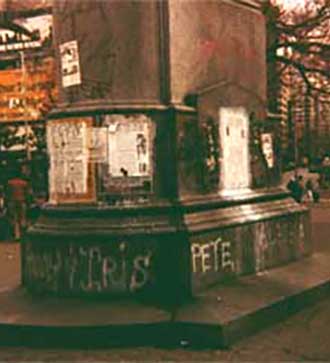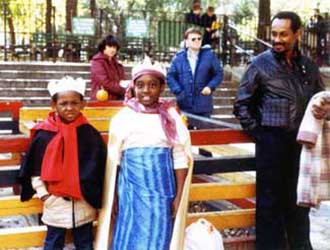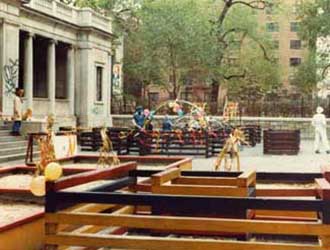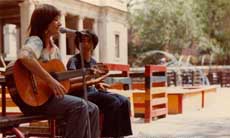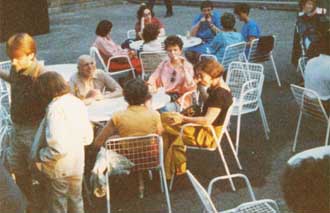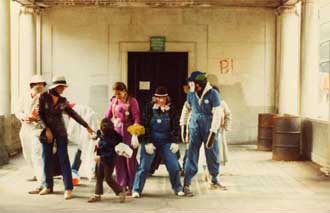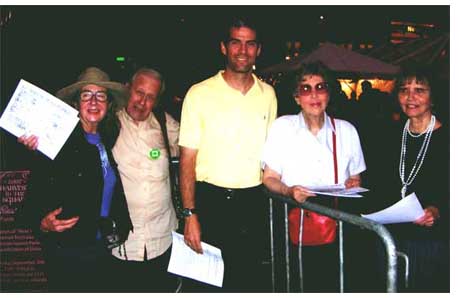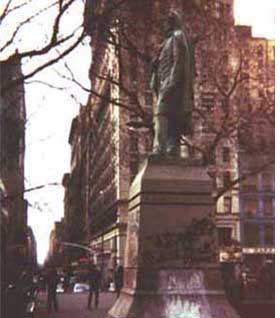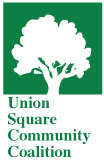
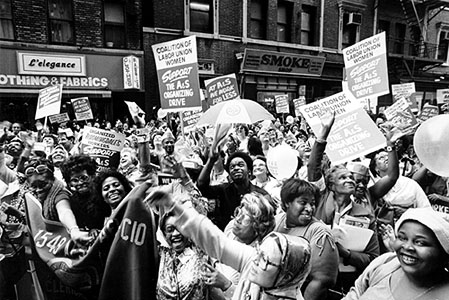 |
 |
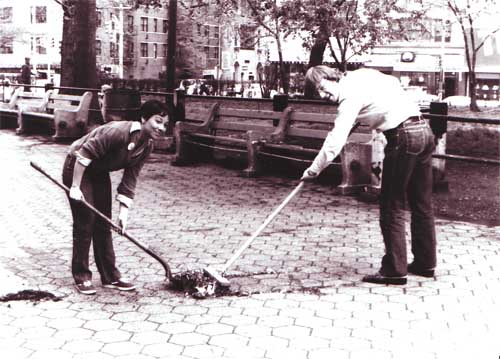 |
“In the shade of the leafy green trees that tower over Union Square Park, 25 New Yorkers sat down to a potluck supper, as if that were perfectly normal in a place occupied until recently by drug dealers and others who tend not to bake casseroles. Many knew each other from their involvement in the Union Square Park Community Coalition Inc., which has organized the potlucks since 1980. |
Union Square Community Coalition History
The Union Square Park Community Coalition has a long and storied history of fighting for the park and the improvement of the surrounding area.
The USPCC (the word "Park" in the title was eventually dropped) dedicated itself to lobbying for park restoration, to increase
funding and to encourage both community use and use by the neighborhood. To this end, the new organization (now a 501-3C non-profit
corporation) engaged in repainting the bases of the statues, removing graffiti and inviting neighborhood residents to join in new
plantings.
We were relentless in keeping the public interested in the park and showing the Parks Department there was a real constituency for park renovation. To raise money, we held flea markets and bake sales, which also brought more people into the park and made them aware of our work. Finally, due to our and others' lobbying efforts, the Parks Departmentembarked on the first phase of renovation of Union Square Park. After much resistance, the department allowed us to work with them in planning the new layout for a restored park. Our efforts paid off in Spring, 1988 when a new southern half of Union Square Park was opened to much rejoicing. The area surrounding the park had been changing; many loft conversions brought new families and lots of children and the renovated park became immensely popular. However, what was needed next for the park was real playgrounds for the children and we had another issue to fight for. At about this same time a large building, Zeckendorf Towers, opened on the old S. Klein's site on Union Square East. USCC and many others felt that this proposed development was inappropriate for the area. We had spent the previous year lobbying the surrounding four Community Boards and the New York City Planning Commission to control the rezoning of Union Square so that the rest of the Square would not become similarly oversized. It took much mobilization and effort but we were eventually successful. The changes in the area and the renovation of the park brought people into the park. The new families, and those who had been fearful before, now began filling the park to such an extent that there was a shortage of seating throughout. We helped the Parks Department solve this problem by buying new movable chairs and tables. We also added special tables with attached seats. All are very widely used.
But the popularity of the park brought with it other new problems. It became a magnet for holding both commercial and public-spirited events. Community Board 5 was overwhelmed with requests from all the boroughs and from many other regions. Prayer groups from as far away as North Carolina wanted to hold revival meetings in the park, and various ethnic and other organizations wanted to hold concerts, festivals, gatherings and celebrations there. There was a tremendous demand to use the park as a showplace for every type of enterprise. It reached the point where there was rarely a weekend when the park was not being taken over by some public or private group. We pressured CB5 to limit these events and worked with them; we attended the monthly meetings of the CB5 Parks Committee and also those of the full board. Meanwhile, however, the city was encouraging private companies to put on events in the park for a price. These productions were often inappropriate for a small park and what was now a residential neighborhood. In essence, the city began selling park space for revenue. The soon-massive number of events also created a terrible noise problem due to unrestrained amplification. Most organizers ignored volume restrictions and the whole neighborhood was affected. This is an ongoing problem: with the beginning of warm weather each year, USCC has to plead with park officials and the police to monitor volume violations.
Also, due to our efforts, historic building and areas were landmarked in the square and on nearby streets. We fought hard for preservation, without the support of our local business development group, and were fortunately successful. The beautiful restored Barnes & Noble building would now be an ordinary high-rise without our relentless efforts to maintain the character of Union Square. Restaurants and other establishments soon realized the potential in these lovely old buildings and Union Square became more vibrant than ever.
In the late 1980s and 1990s, New York University began a big expansion in our area, mainly by building new structures and renovating existing structures as dormitories. Most of these were quite large, and too many were built for our residential/commercial area. The University seemed indifferent to the existing community and we became one of manyorganizations jointly protesting this uncaring attitude and the area's overdevelopment. The task force these organizations formed made it known to NYU how unacceptable their swallowing up of our neighborhood had become. Unfortunately, the university moved so fast that the damage is done; part of NYU's outdoor campus is now our small, overused park. Safety at night, at least, is certainly not an issue; except on really frigid nights, the park is alive! \To keep the park safe, lively and freely open for all is the mission of USCC. We do not intend to cease being caretakers of our beloved park and square. We support its use for protest and gatherings and feel gratified that it is returning to its former role as a public square. It is the closest this city has to a Greek agora. We rejoice in that and will do our best to ensure that it continues as such and is not misused.
USCC Works to Improve Union Square with Labyrinths Read More: In Union Square Park, Potluck al Fresco |
